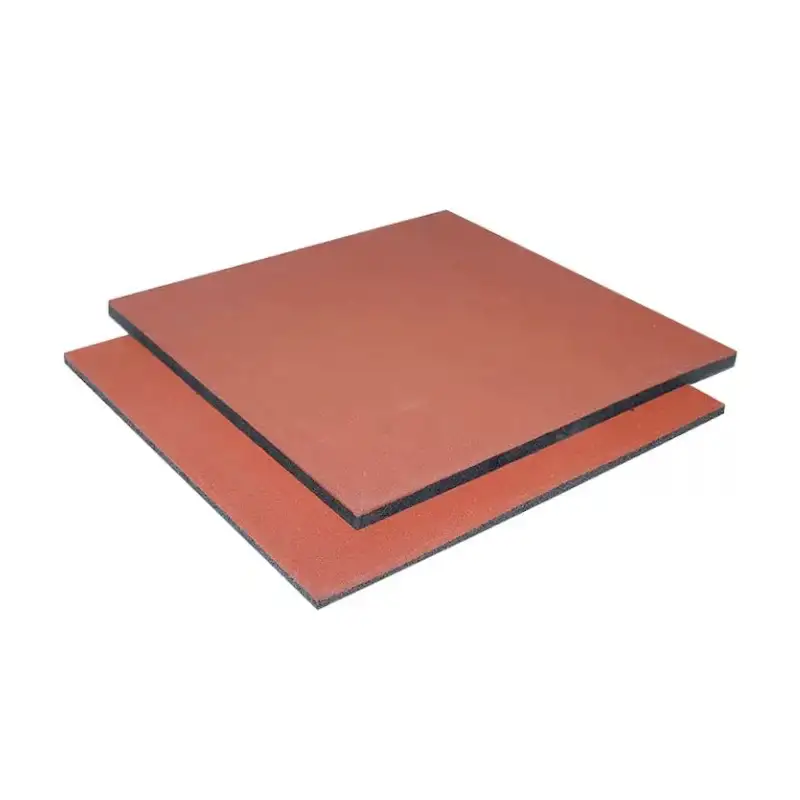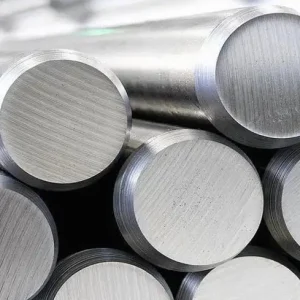NM500 is a Chinese-designation, high-hardness abrasion-resistant steel plate (nominal ~500 HBW) engineered for heavy-wear applications, it offers a cost-effective balance of hardness, toughness and weldability compared with conventional carbon steels and is frequently used as a practical alternative to branded AR steels such as Hardox® 500 and JFE EH500. For procurement, NM500 gives long wear life at a lower landed cost when sourced from China manufacturers such as MWAlloys (100% factory pricing, ready stock, fast ship), but careful specification control (GB/T 24186 requirements, hardness scatter and impact properties) and correct fabrication/welding practice are essential to avoid brittle failure in service.
What is NM500 steel plate?
NM500 is a wear-resistant (abrasion-resistant) hot-rolled steel plate produced to Chinese wear-plate standards (NM series under GB/T 24186). The “NM” series denotes high-yield, wear-resistant steels and the number (500) indicates a nominal Brinell hardness grade in the 480–525 HBW band for NM500 variants. NM500 is manufactured by quenching & tempering (Q+T) routes to achieve the higher hardness and the combination of strength / toughness required in buckets, liners, chutes, crushers and other heavy-wear parts.
Standards and designation (GB/T 24186)
The NM family and the technical requirements most commonly cited in industry come from China’s GB/T 24186 standard (High strength abrasion resistant steel plate, sheet and strip for construction machine). The standard specifies designation, mechanical/chemical limits, Brinell hardness ranges, impact energy where required, and test/inspection rules used by reputable mills and vendors. When buying NM500, require the mill to quote compliance with GB/T 24186 (state edition/year) and to supply certified test reports (chemical analysis, hardness mapping, CVN impact where applicable).
Chemical composition
Note: individual mills publish slightly different ladle analyses. Below is a representative composition range pulled from GB/T-aligned datasheets and manufacturer ladle analyses; specify exact limits in purchase contracts.
| Element | Typical / Max (wt%) for NM500 |
|---|---|
| C (Carbon) | ≤ 0.38 |
| Si (Silicon) | ≤ 0.70 |
| Mn (Manganese) | ≤ 1.70 |
| P (Phosphorus) | ≤ 0.020 |
| S (Sulfur) | ≤ 0.010 |
| Cr (Chromium) | ≤ 1.20 |
| Mo (Molybdenum) | ≤ 0.65 |
| Ni (Nickel) | ≤ 1.00 |
| B (Boron) | 0.005–0.06 (trace control) |
| CEV (Carbon equivalent) | ~0.60–0.75 (typical calc. — variable) |
Sources describing GB/T composition and shop ladle analyses are consistent with the table above; always request the mill ladle certificate for your heat to confirm actual values.
Mechanical properties & hardness
NM500 is produced to deliver high hardness and adequate toughness. Typical guaranteed values (mill data / GB/T guidance):
| Property | Typical / Guaranteed |
|---|---|
| Brinell hardness (HBW) | 480 – 525 (nominal 500 HBW) |
| Yield strength (Rp0.2) | Often > 900 MPa (grade and thickness dependent — verify mill certificate) |
| Tensile strength (Rm) | Typically 1000–1200 MPa range (varies by heat & thickness) |
| Elongation (A%) | Typically 10–16% (thinner plates higher) |
| Impact energy (CVN) | Some NM500 variants require low-temp CVN (e.g., −20°C) — check spec |
| Weldability | Good with qualified procedures, but preheat/interpass and low-hydrogen consumables are often required for thicker sections |
For critical service conditions (impact + abrasion), ask vendors for both hardness mapping and CVN results — hardness alone does not guarantee adequate fracture resistance.
NM500 standard sizes and estimated weights
NM500 is offered in broad size ranges; the following are typical mill ranges (confirm with supplier):
-
Thickness: commonly 3 mm up to 100+ mm (commercially most common 4–50 mm).
-
Width: 1000–2500 mm (some mills supply up to 3350 mm widths in special runs).
-
Length: cut to customer requirement, commonly 2000–12000 mm.
Quick weight guide (metric): (steel density = 7.85 t/m³)
Weight (kg) = Thickness (mm) × Width (mm) × Length (m) × 7.85 / 1,000. Example: 10 mm × 2000 mm × 6 m → 10×2000×6×7.85/1000 = 942 kg ≈ 0.942 t.
What is equivalent to NM500 steel?
Common equivalents / comparable grades on the market:
-
Hardox® 500 (SSAB) — global branded AR steel with strict quality & guaranteed hardness scatter / toughness properties. Widely considered performance benchmark.
-
JFE EH500, XAR500, RAEX/ABREX 500 — other international AR steel designations with comparable nominal 500 HBW class.
Key purchasing note: “Equivalent” should not be used loosely. Branded products such as Hardox include tighter statistical guarantees for scatter, guaranteed impact energy and extensive mill test traceability. Domestic NM500 from reputable Chinese mills can meet the same hardness band and be suitable for many applications, but if the application is critical (e.g., high-impact slurry conveyors, abrasive ore at low temperatures) you should require specific toughness tests and acceptance criteria in the contract.
Typical applications and case examples
NM500 is used where sliding or particle abrasion is the primary failure mode:
-
Excavator and loader bucket liners, cutting edges and throat liners.
-
Crusher liners, cone and jaw crusher plates.
-
Dump truck body plates and side liners.
-
Chute liners, screens and slurry transport liners.
-
Wear plates in cement plants, mining conveyors, and quarries.
Case example (typical): Replacing mild steel liners in a crusher with NM500 often extends service life several times, reduces downtime and lowers lifecycle cost — but proper design to avoid stress concentrators and to allow for brittle fracture mitigation is critical.
Fabrication, welding and inspection guidance
-
Preheat & cracking risk: For thick NM500 plates or when carbon equivalent is high, preheat between welds and controlled interpass temperature are recommended to avoid cold cracking. Use qualified low-hydrogen electrodes or filler metals designed for AR steels.
-
Weld filler selection: Choose filler that provides adequate ductility at service temperatures; consult the plate mill’s welding recommendations.
-
Post-weld heat treatment (PWHT): Generally not required for thin sections; PWHT may be considered for heavy welds but consult the plate mill.
-
Hole drilling & machining: Use high-speed tooling and peck drills; for thick plate, pilot holes and step drilling minimize work hardening and cracking.
-
Hardness mapping: Require hardness measurements across the plate (surface and through thickness where possible) and mill heat report for traceability.
-
Impact testing: If the part sees impact loads or low temperature service, require CVN tests at the project-specified temperature.
-
Quality checks: Chemical analysis (mill ladle report), hardness, tensile and impact tests, and plate certificate (EN/GB/T style) should be provided.
NM500 price comparison (USA, Europe, China)
Market prices fluctuate daily. Below are representative wholesale FOB/EXW ranges captured from manufacturer listings and market sources (sourced Sept 2025 market pages and supplier offers). Use these as indicative and request live quotes.
| Region | Typical 2025 range (USD / tonne) | Notes / source |
|---|---|---|
| China (FOB/EXW, domestic mills) | USD 520 – 750 / t | Multiple Chinese suppliers show FOB ranges roughly USD 500–750/ton depending on thickness and order qty. |
| Europe (imported branded & merchant) | USD 900 – 1,500 / t | Branded Hardox or imported plates carry a premium due to brand guarantees, freight, and VAT/import duties. |
| USA (domestic stock & imported) | USD 850 – 1,400 / t | Local availability, brand (Hardox) and mill certifications drive price; smaller distributors often charge more per small orders. |
Procurement tip: For large projects, landed cost (price + duty + inland freight + scrap return & service life) often makes Chinese NM500 highly competitive versus European branded plates. However, for guaranteed scatter and cold-temperature toughness, branded products usually justify the premium. Always compare TCO (total cost of ownership), not unit price only.
Purchasing checklist
-
Exact standard designation (e.g., NM500 to GB/T 24186: year).
-
Thickness, width, length tolerances and flatness & edge condition.
-
Mill heat number traceability and ladle chemical analysis.
-
Hardness range & mapping method (HBW locations).
-
Mechanical tests: tensile, yield, elongation and CVN at specified temperature (if required).
-
NDT (visual) and inspection acceptance criteria.
-
Welding recommendations and welding procedure qualifications (if provided).
-
Packing, delivery terms (EXW/FOB/CIF), MOQ and lead time.
-
Warranty / replacement terms for material defects.
FAQs
Q. Is NM500 the same as Hardox 500?
A: They are similar in nominal hardness class (~500 HBW) and purpose, but Hardox® is a branded product with stricter guaranteed scatter and documented toughness limits. Treat them as comparable but not automatically interchangeable without specification confirmation.
Q. What hardness should I expect from NM500?
A: Typically 480–525 HBW. Ask the mill for hardness certificate and mapping.
Q. Can I weld NM500?
A: Yes. but use proper preheat/interpass control, low-hydrogen consumables and follow the mill welding guidance to reduce cracking risk.
Q. What thicknesses are common?
A: Commonly 4–50 mm for general use; mills can supply thinner or heavier sections up to 100+ mm.
Q. How much does NM500 cost per ton in 2025?
A: Indicative FOB China ranges USD 520–750/ton; Europe/US branded products typically cost significantly more. Get live quotes.
Q. Is NM500 brittle?
A: Higher hardness increases risk of brittle behavior if impact or low temperature service isn’t considered. Require impact (CVN) data for critical parts.
Q. What are common failure modes?
A: Abrasion (desired resistance), edge chipping, and brittle fractures from stress concentrators or poor welding.
Q. Can NM500 be heat treated again?
A: NM500 is Q+T processed at the mill; local re-heating will change properties and is not typically recommended. Consult mill before any PWHT.
Q. Do Chinese NM500 plates have international certifications?
A: Reputable mills can supply ISO 9001, mill test certificates, and third-party inspection results; branded importers often supply additional documentation. Always verify.
Q. How to extend service life of NM500 parts?
A: Control stress concentrations, design for replaceable liners, use correct weld and bolt patterns, and monitor wear patterns to schedule predictable replacements.





